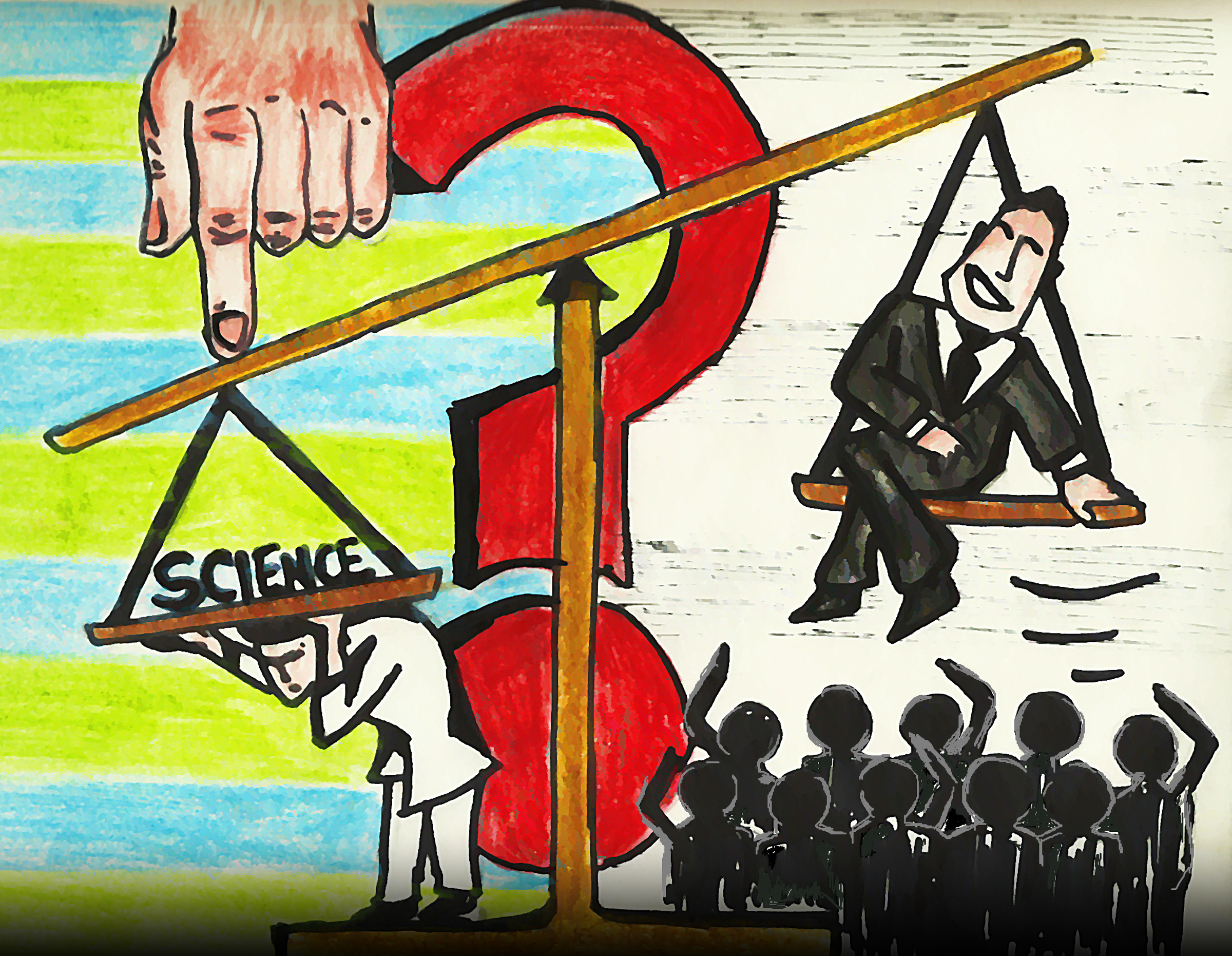Science, with all its wonders and promises, always enticed me as a child. With all the naiveté of youth, I subscribed to the notion that scientists (and experts in general) would lead us to a utopian future of a united human race with nothing but abundance and prosperity for all. Then, I grew up and learned the truth about politics; about how this utopia had never been of interest to politicians, nor to most people in the first place.
A trade-off exists between two types of government systems: technocracy and democracy. The pure form of technocracy leads to elitism and possible tyranny, while the pure form of democracy (without a mechanism to include expert judgement in decision-making) will lead to state failure. Although the following two stories occur in very different times and places, the connection between them will help us formulate the right questions on demarcating scientific authority.
Charles Thorpe, a professor of sociology at the University of California San Diego, thoroughly analyzed the case of J. Robert Oppenheimer in an article published in Social Studies of Science by depicting the inquisition of scientific authority in post-World War II America. Perhaps the second-most renowned physicist of his time (the first being Albert Einstein), Oppenheimer was the lead scientist on the secret Manhattan Project, which was responsible for developing the atomic bomb.
After the Allies dropped the atomic bomb, ending the Second World War, science in the U.S. was seen a means to further advance the military. Assimilation between scientists and the government began to take place so that scientific expertise could be used for further military (and later economic) applications, especially with the rise of the Soviet threat. The mechanism for the assimilation was based on forming panels of scientific experts, or ad-hoc committees, to offer advice to elected officials. In that sense, those officials retained control over policy orientation while benefiting from experts’ knowledge. When the Soviets tested their first hydrogen bomb (H-bomb), the U.S. government rushed to keep up with the arms race, demanding that their scientists focus on building the American H-Bomb.
Though Oppenheimer emerged from WWII as the most prominent scientific advisor to the state, he exceeded his demarcated authority by discouraging his peer scientists from working on the H-bomb because he questioned its strategic necessity. Oppenheimer advised the government to invest in researching small-scale tactical nuclear weapons that could be deployed in the battlefield rather than on civilian populations, a suggestion that the ‘Red Scare’ propaganda advocates in the military detested. Red Scare propaganda in post-World War II America was based on exaggerating the Soviet threat to secure popular support for military expenditure and heightened security measures. Oppenheimer was brought to a hearing by the United States Atomic Energy Commission in which his national loyalty was questioned. Although exonerated from treason charges, Oppenheimer was stripped of his security clearances and privileges and was no longer allowed to work for any government projects.
The second story takes place in Egypt in 2014, where in February, the Egyptian military announced the discovery of a cure for HIV. The mechanism of the ‘cure,’ which allegedly treats not only HIV but also Hepatitis C (HCV), was not discussed thoroughly for alleged security reasons. The timing of the announcement, on the brink of presidential elections in which the Egyptian popular hero Field Marshal Abdel Fattah al-Sisi is running – suggests that the invention aims to highlight the achievements of the military and its leader, and appeal to a significant demographic of the electoral pool (Egypt has highest rate of HCV infections in the world).
When Essam Heggy, chief scientific advisor to the Egyptian president and a renowned NASA scientist, expressed his harsh skepticism about the invention and considered it a scientific scandal, he was subject to the Egyptian media’s ad-hominem attacks. Heggy told Egyptian newspaper El Watan, “I want to be clear and explicit, what has been said and published about the invention of the armed forces hurts the image of scientists and science in Egypt.”
Not unlike the Oppenheimer hearing, Heggy was accused by government supporters of treason and anti-nationalistic sentiments, and by some TV talk show hosts of siding with the ousted Muslim Brotherhood against the military. The witch-hunt continues to this day.
Despite the great variance in time and place of both stories, an obvious connection exists between them. Both Oppenheimer and Heggy were part of the government, and both of them disagreed with high-ranking officials. One can argue that if both issues were put to a vote, the American population during the Red Scare of the 1950s, and the Egyptian population during the country’s turbulence in 2014, would put their trust in their political leadership over scientists.
The problem is therefore inherent to the system in which the public, represented by their elected officials or beloved military heroes, challenge the authority of the experts whenever it defies their government propaganda. The questions of how to establish scientific authority that gains the trust of the people, and the boundaries of this authority versus the judgement of the elected officials, will remain unresolved. In the end, people will have to make a choice about who to trust to govern them, and for that choice we shall reap the consequences.

